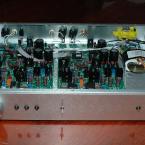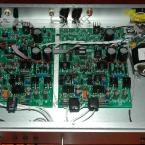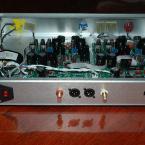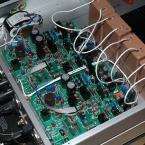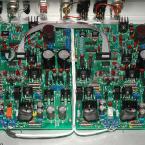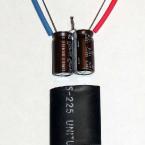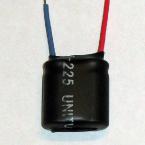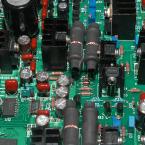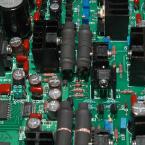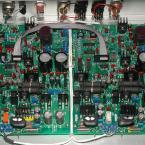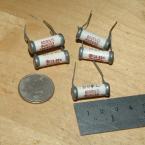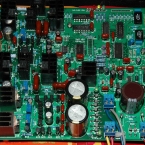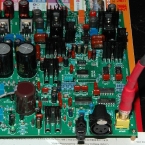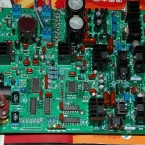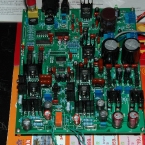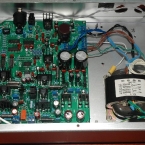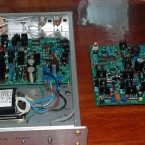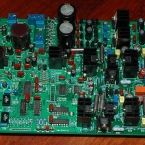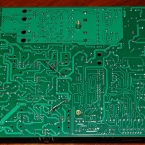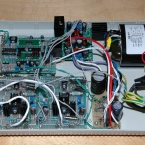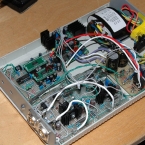After many hours of break-in, the PCM1794A DAC can be operated in OCL mode (Output Capacitor Less) as show in the picture below. First the Point A and B has to be ensured at near 0V by measurement with and without digital input signal and also power on and off for serveral times. If everything is fine, then you can connect a wire to short the output capacitor locations below:
A wire is used to short the location C83 and C84. This is the reference sound mode and it is natural and accurate.
*** Try OCL mode at your own risk *** in fact the risk is low after I try my set for 3 weeks, still safe!
You can also try KBG 10uF PIO capacitor which is expensive but it sound a bit more mellow than MBGO cap and the bass is also stronger. I think a 0.01uF telfon capacitor in parallel with KBG is very good. So it would be lot of fun to try different combinations of output capacitors to get the sound you want…
Silmic II Bi-Polar capacitor is custom made as shown in the pictures below. The value of capacitor can be from 22u till 100uF with voltage minimum 35V.
Update: 22 Sept, 2010
After testing KBG at the output couple, now it is time to try it at I/V capacitor – 6800pF location. I brought this cap from ebay again and it is a 1963 made part claimed to be KBG-I version. I do not know what is the meaning of I but anyway I have put it in the set and listen. I think I need more time to listen (may be break-in also as the cap is almost same age as me!). Some pictures below:
Update: 24 Sep, 2010
I use my mu-stage preamp with the OCL DAC, it sound just right! Mu-stage see below link with all PIO upgrade!
http://www.fetaudio.com/archives/388
So if you do not have a tube preamp, use KBG cap at the DAC output. If you have a tube preamp, use OCL mode to get best bass.
Related Images:
